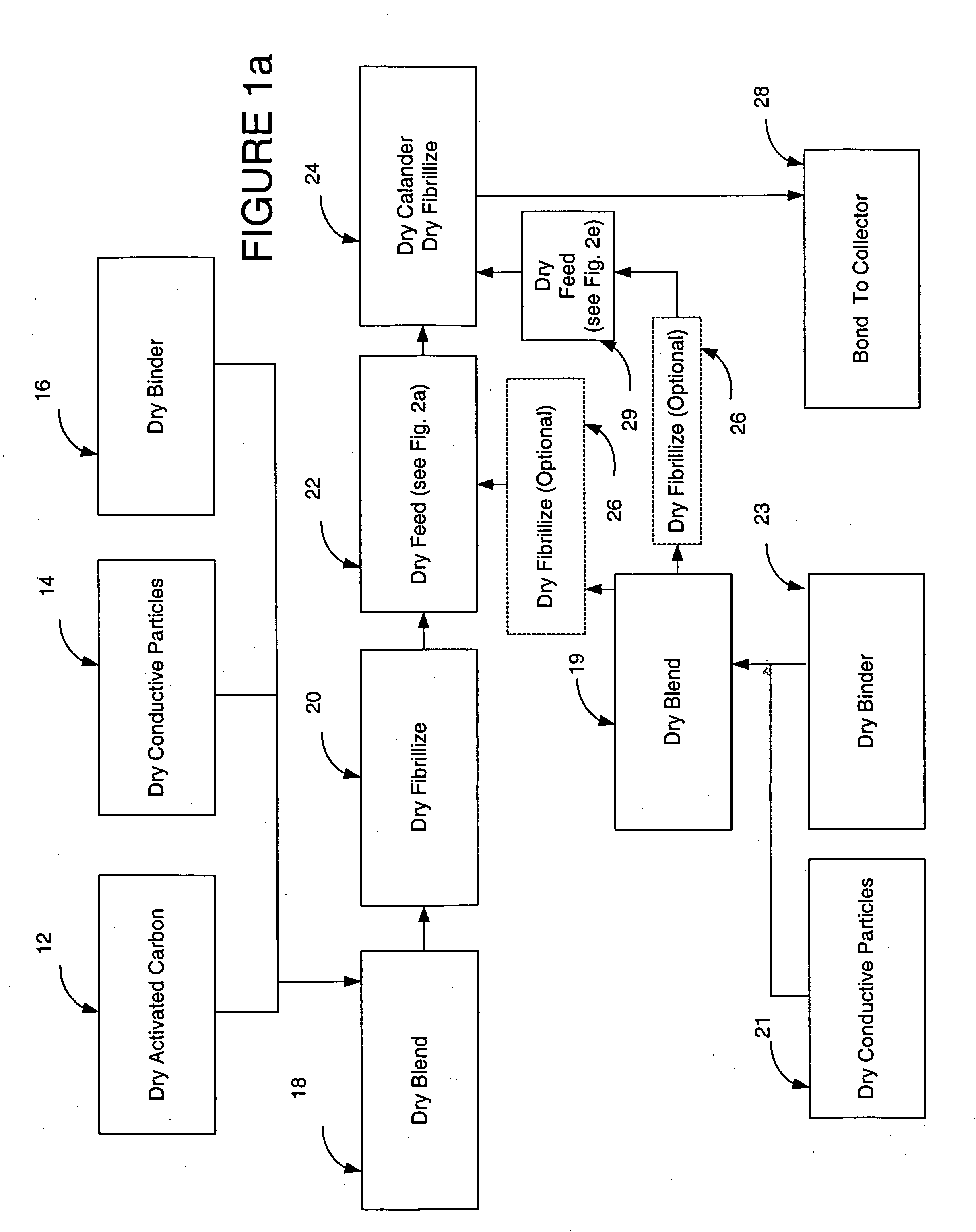Recyclable dry particle based electrode and methods of making same
a dry particle and electrode technology, applied in the direction of non-aqueous electrolyte cells, non-metal conductors, cell components, etc., can solve the problems of undesirable destructive breakdown, undesirable destructive breakdown of double-layer capacitors, and no operating voltage of double-layer capacitors, etc., to achieve high yield, high yield, and low cost
- Summary
- Abstract
- Description
- Claims
- Application Information
AI Technical Summary
Benefits of technology
Problems solved by technology
Method used
Image
Examples
Embodiment Construction
[0067]Reference will now be made in detail to embodiments of the invention that are illustrated in the accompanying drawings. Wherever possible, same or similar reference numerals are used to refer to same or similar steps and / or elements used therein.
[0068]The present invention provides a high yield method for making durable, highly reliable, and inexpensive structures. The present invention eliminates or substantially reduces use of water, additives, and solvents, and eliminates or substantially reduces impurities, and associated drying steps and apparatus. The invention utilizes a dry fibrillization technique, where a matrix formed thereby is used to support a selected variety of particles. In one embodiment, the dry fibrillization technique is used to fibrillize binder. In one embodiment, the binder comprises fibrillizable fluoropolymer. In one embodiment, the fibrillizable fluoropolymer comprises PTFE or Teflon particles. In one embodiment, the matrix of dry fibrillized binder ...
PUM
| Property | Measurement | Unit |
|---|---|---|
| width | aaaaa | aaaaa |
| voltages | aaaaa | aaaaa |
| voltages | aaaaa | aaaaa |
Abstract
Description
Claims
Application Information
 Login to View More
Login to View More - R&D
- Intellectual Property
- Life Sciences
- Materials
- Tech Scout
- Unparalleled Data Quality
- Higher Quality Content
- 60% Fewer Hallucinations
Browse by: Latest US Patents, China's latest patents, Technical Efficacy Thesaurus, Application Domain, Technology Topic, Popular Technical Reports.
© 2025 PatSnap. All rights reserved.Legal|Privacy policy|Modern Slavery Act Transparency Statement|Sitemap|About US| Contact US: help@patsnap.com



